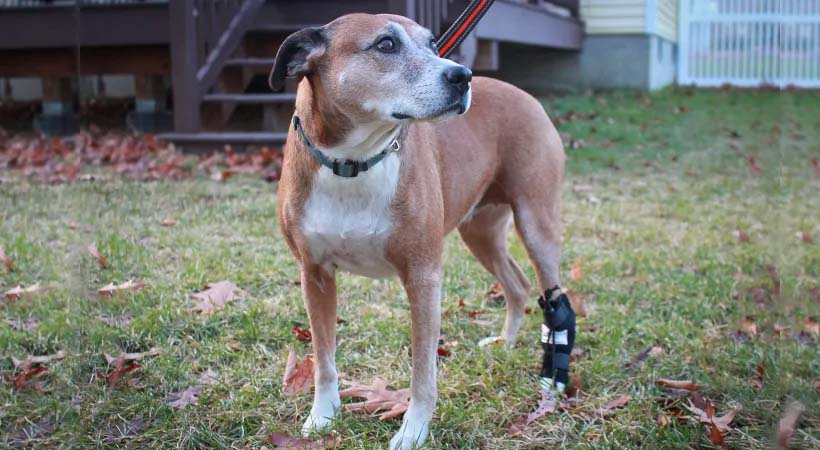Beagle Lifespan: How Long Do Beagles Live? (Life Expectancy)

Protect Your Pet's Paws Against Dragging
Why is my dog dragging his paw?

When dogs drag their paws, they are likely unaware of the placement of their feet. A dog who is dragging his toes and scraping his paws when they walk is likely having issues with proprioception or paw placement.
Dogs don’t suddenly drag their legs for no reason, and this is often a sign of a neurological problem. Paw dragging is usually a symptom of a communication breakdown between the brain and the nerves. Whether due to injury or an underlying medical problem, when there is an interruption in the spinal nerves, many dogs struggle with paw placement.
Paws knuckling under, dragging, or scraping may occur all the time or only when a dog is tired. Along with scrapes, open wounds, or standing on the top of the paw, a dog may also experience uneven wear on their toenails.
What to do if your dog's paws are dragging
Anti-Knuckling Devices
Corrective training tools, like the No-Knuckling Training Sock, are designed to help improve your dog’s paw placement and prevent dragging paws. With training socks for both the front and back legs, the No-Knuckling Training Sock can help dogs with dragging front or back paws. For your pet's safety, our No-Knuckling Training Socks are only available through your veterinarian. If your dog is dragging their paws, please visit your veterinarian for diagnosis and treatment.
How does the No-Knuckling Training Sock work?

The cord of the No-Knuckling Training Sock stimulates the skin between the center of two toes and evokes a withdrawal reflex, causing the pet to lift their foot. Initially, your dog will lift their paw high up and take an exaggerated step.
Over time, when worn for repetitive, short-term use (usually 2 - 5 minutes at a time), your dog will slowly learn to walk without dragging their paw. The No-Knuckling Training Sock can be worn during rehabilitation exercises or during a pet’s daily walk.
Many dogs with dragging paws also suffer from hind leg weakness, so adding weight from a splint or a boot may make it difficult for a dog to lift their leg. The training sock is designed to be lightweight, making it easy for dogs to walk normally. Long straps wrap around the leg to provide additional support above and below the joint as they walk.
Dog Boots for Dragging Paws
Dogs who drag their feet only occasionally may benefit from wearing a boot to protect their paw and toenails.
A dog boot helps protect the top of the foot from scraping injuries and helps to prevent uneven toenail wear. Dogs who fold their paws under when they walk may want to wear a pet boot upside down. By wearing the sole on the top of the paw puts the paw protection right where they need it. A dog boot is also an excellent, lightweight solution for dogs with weak back legs. The boot can be worn in between uses of the No-Knuckling Training Sock.
Related Articles:








